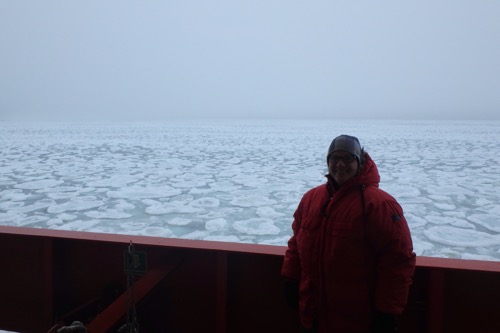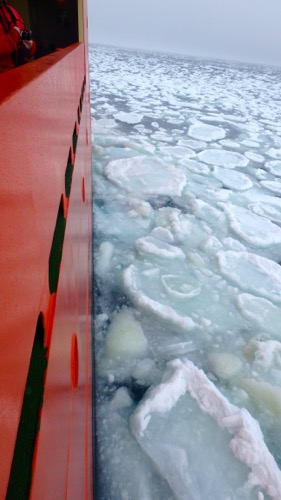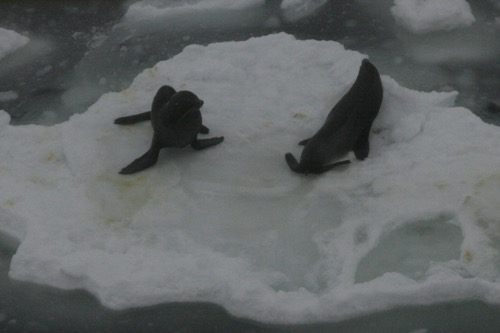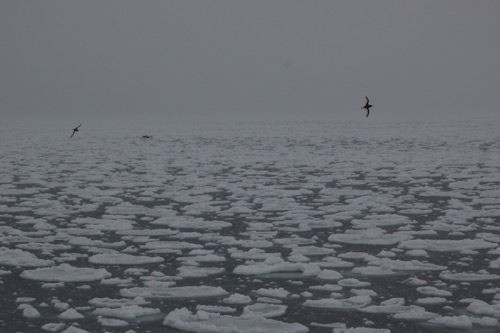First Signs of Ice
The plan for today is to sample for our first incubation, which means the science team will be extremely busy all day. I may not have time to write a detailed journal today, so I thought I would show you some pictures from our first signs of ice. We were moving through fog most of the day and occasionally seeing very small icebergs floating at the surface. As the afternoon progressed, the fog lifted and we moved into a sea of floating ice referred to as pancake ice. I went out on the 01 deck and then to the bow to watch the ice float past the RVIB Palmer. I giggled most of the time, if fact, you will not only hear the wind and the sounds of the ice on the ship, but also my laugh in the following video. My first experience with sea ice is one I will never forget. The sounds and sights of the ice moving over waves and sliding along the side of the ship are truly amazing!


More Wildlife Sightings
Some of the science crew were able to snap a photo of the first marine mammal sighting of the cruise. Two young Antarctic fur seals Arctocephalus gazella were sitting on one of the ice floats that passed by the ship. Ninety-five percent of the Antarctic fur seal population breen on the Island of South Georgia located to our east. Unfortunately, I did not see these seals, but I am thankful that Dr. Chappell was on the bridge and snapped a quick photo. I anticipate my own photos of these pinnipeds as we move closer to the continent.

We were also surrounded by snow petrels Pagodroma nivea and Antarctic petrels Thalassoicca antarctica throughout the afternoon.



Comments
Pagination